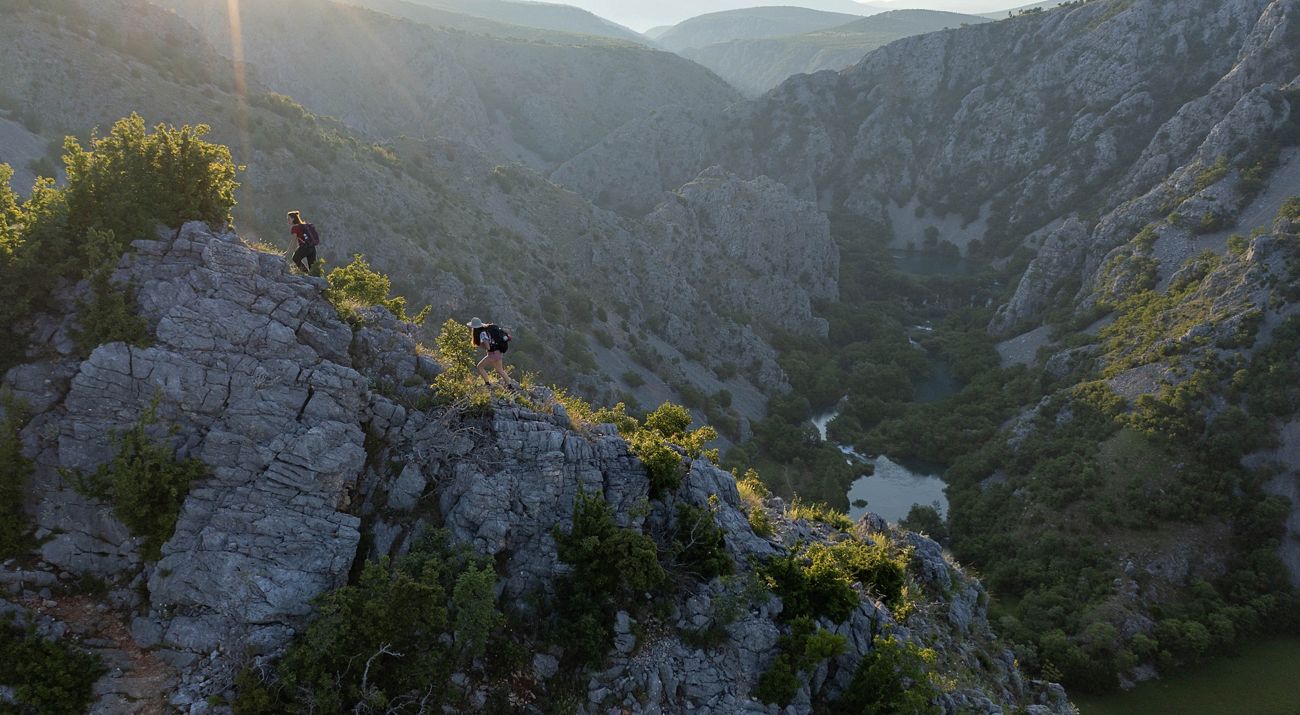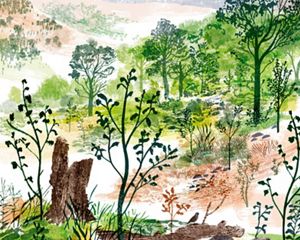United for Europe’s Rivers
With Western Europe’s waterways clogged by thousands of dams, Balkan countries are rallying to protect the continent’s last free-flowing rivers.
Spring 2022
Growing up in arid South Texas, John Zablocki saw fresh water as almost magical.
“As a kid, we used to come up on a cow trough, just in the middle of brush country,” Zablocki says, recalling the stock tanks, fed by windmill-powered pumps, that ranchers use for cattle in remote pastures. “And it would be full of amphibians! I still don’t know how they got there, but it just ingrained in me the fact that, where there’s water, there’s life.”
It was with the same sense of wonder that Zablocki, former director of energy infrastructure and land use strategy for The Nature Conservancy in Nevada, first encountered the rivers of Southeast Europe while traveling during college. Winding through the Balkan Peninsula, the mountainous region just north of Greece and separated from Italy by the Adriatic Sea, these waterways are among the continent’s most intact, having largely escaped the centuries of damming and channeling that has reshaped most rivers throughout the rest of Europe.
“There’s an otherworldliness about them,” Zablocki says. “That turquoise-blue, crystal clear, drinkable water looks like a fantasy.” It’s no wonder, he notes, that the region has served as a location for film and TV series, including The Chronicles of Narnia and Game of Thrones.
But these fantastic rivers face a very real threat. Since the late 1990s, when the Balkans began to move away from aging coal-fired power plants, hydroelectric developers have proposed thousands of new dams. While shutting down coal plants is a necessary step in the fight against climate change, hydropower has its own downsides, such as altering a river’s flow, which damages irreplaceable freshwater, wetland and riparian habitats.
Community groups have succeeded in preventing some projects, occasionally with help from international environmental organizations. “But the victories were temporary and the defeats were permanent,” says Zablocki, who studied community-based conservation as a Fulbright Scholar at the University of Ljubljana, in Slovenia. Hundreds of dams have already been built, and the proposals are still coming—according to the regional group RiverWatch, the next few years could see almost 3,000 new hydropower plants across the Balkans, including within the boundaries of national parks.
“Conservation strategies, historically, have been terrestrially based, but that’s not doing the job,” says Amy Newsock, TNC’s global freshwater protection program advisor. “Rivers need our deliberate and focused efforts to protect them, too.”
The plight of this region, which freshwater protection advocates have taken to calling the Blue Heart of Europe, is not unique. Worldwide, only 17% of rivers are both free-flowing and within protected areas. Meanwhile, almost a third of freshwater fish are threatened with extinction, and monitored populations of freshwater wildlife are down an average of 84% since 1970. But the freshwater team at TNC is now working to turn the tide by building a global framework—inspired by legislation enacted more than 50 years ago in the United States—that can be used to give rivers permanent legal protection. And with some early victories in the Balkans, this new approach is showing signs it could offer big dividends for freshwater habitats around the world.
Quote: Dragana Mileusnić
In smaller villages, people are rising up against detrimental development in their local communities, which poses a threat to rivers that were untouched for centuries.
In the early 1990s, after a decade of political and economic turmoil, the communist state of Yugoslavia dissolved, leaving a half dozen successor nations beset by their own internal conflicts. Throughout the 1990s, wars flared across the Balkan Peninsula, killing tens of thousands of people and displacing approximately 2 million. Today, the impact of the breakup is still felt in the form of economic development that lags behind the rest of Europe.
“We are moving on,” says Dragana Mileusnić, TNC’s Southeast Europe program director, who grew up in Belgrade, Serbia, and is now based in Brussels. “When you talk to people, they don’t live in the past,” she says. “But the economic situation, that’s the legacy of conflict.”
Catching up economically will require rebuilding the energy sector. Right now, Southeast Europe remains dependent on staggeringly inefficient and dirty fossil fuel plants, most of which date to the communist era. A 2019 study by the Centre for Research on Energy and Clean Air found that 18 coal-fired plants in the western Balkans emitted twice as much sulfur dioxide as 221 coal-fired plants emitted in the European Union. These emissions contribute to notoriously poor air quality in cities like Sarajevo and Belgrade—and a growing concern about the environment.
“We were taking a lot of what we had for granted,” Mileusnić says. “But now, since development is picking up and there are so many new pressures on nature, we’re starting to say, ‘OK, we are now really at risk of losing it. So we better do something.’ Even in smaller villages, people are rising up against detrimental development in their local communities, which poses a threat to rivers that were untouched for centuries.”
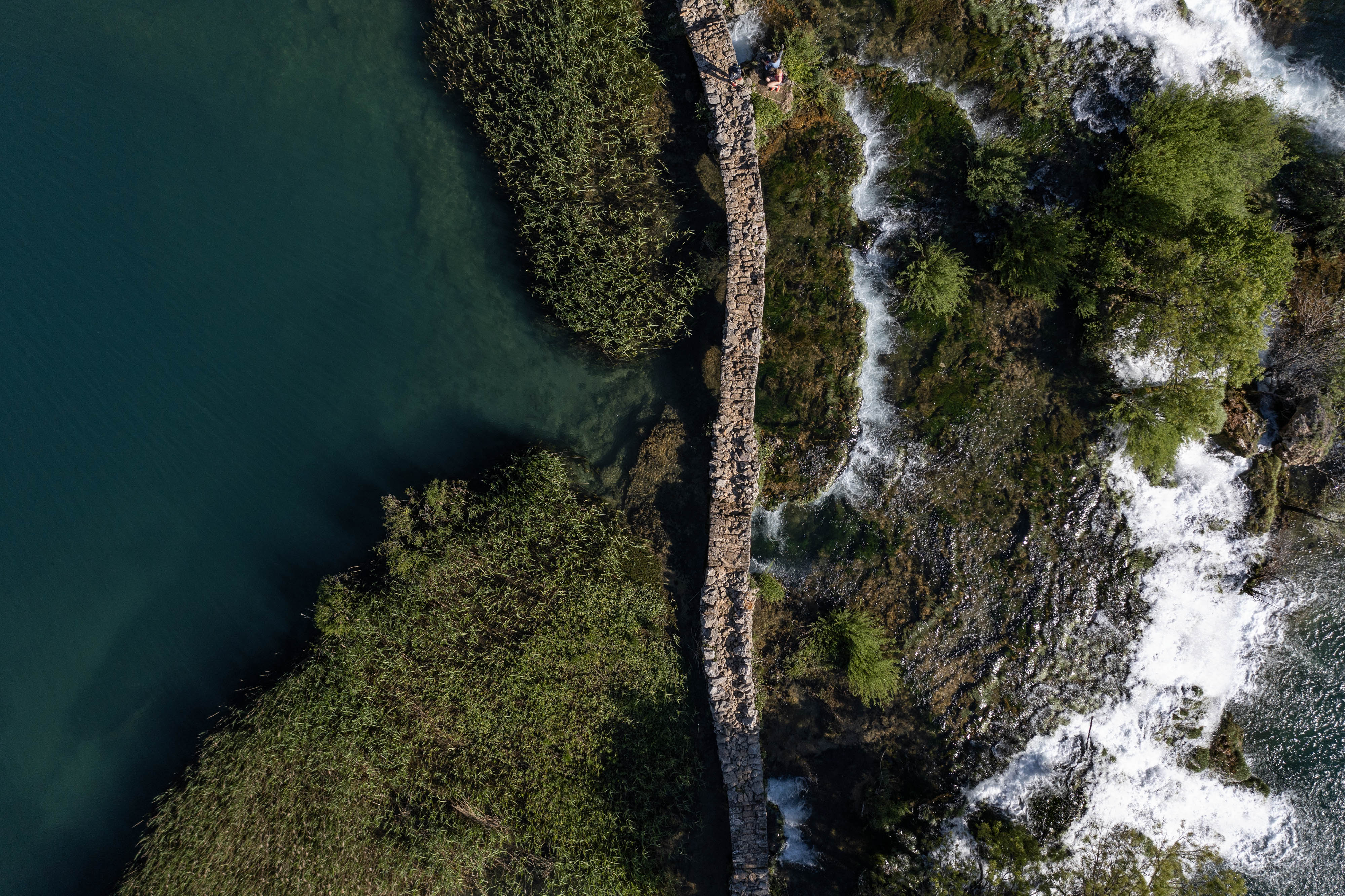
The Future of Energy in Southeast Europe
As the rest of Europe moves toward a future that is less dependent on fossil fuels, some countries in the Balkan Peninsula are working to catch up. Given the ecological consequences of damming rivers, wind and solar power will be key.
Until recently, progress was hampered by government subsidies that favored hydroelectric power—incentives established more than a decade ago, when wind and solar seemed prohibitively expensive. But as technology has improved and economies of scale develop, costs are plummeting, making wind turbines and solar arrays cheaper, in many cases, than coal plants, with a lighter environmental impact than hydroelectric power. That shift, combined with growing political awareness surrounding the importance of renewable energy sources, has translated into momentum over the past few years, says Igor Vejnovic, Southeast Europe energy coordinator for TNC, who helps local partners plan strategically for renewable energy.
Serbia now boasts some 400 megawatts of wind power, representing about 5% of its total capacity, Vejnovic notes, while Macedonia is installing 100 megawatts of solar on a former coal mine. “And all the governments are pledging that they will build more,” he says. With dozens of plans in the works, the International Renewable Energy Agency predicts that by 2030 solar and wind capacity across the region will approximately triple what it was in 2015.
The irony is not lost on local environmental advocates that an effort to reduce reliance on fossil fuels is what’s threatening their rivers. But while hydropower may be an improvement in that way, it comes with its own environmental downsides.
Damming a river changes it in more ways than might, at first, be obvious. Above the dam, the ecosystem immediately changes from flowing habitat to still water. Organisms whose life cycles may have once depended on free travel up and down the river and its tributaries are now blocked from their feeding and spawning grounds, which can result in population loss.
“You’re isolating a lot of the streams that would normally drain into the river,” says Jonathan Higgins, TNC’s senior freshwater science advisor. “That means fish that would normally move from one stream to another get into a reservoir, and they don’t know where they are—it’s almost like they’re blind, because they don’t have a flow to direct their movements.”
Downriver, the dam prevents seasonal flooding, meaning migratory fish don’t receive the full set of environmental cues around which their reproduction evolved; vegetation that normally thrives in the floodplain dies back; and the system is less able to flush out pollutants. Meanwhile, reservoir water releases can cause unnatural temperature gradients, and water flowing through a dam can be oxygen deprived, at times making the river downstream uninhabitable. “It’s a problem when you’re disrupting the natural pulse of the river,” Higgins says. “There’s a chain reaction that extends beyond just the species living underwater.”
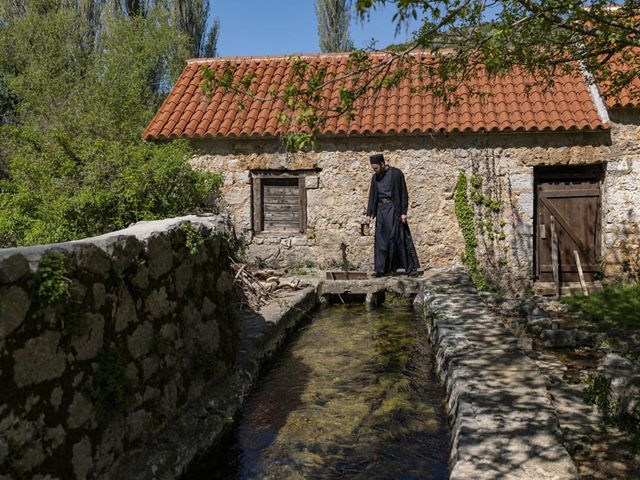
Quote
Changing the historic flow of rivers also has an impact on human communities.
Changing the historic flow of rivers also has an impact on human communities. Residents of the village of Brataj, Albania, have organized protests to prevent four hydropower dams that would destroy local trout populations. In Vinicka, Montenegro, farmers are fighting a dam that would dry out hand-dug irrigation channels their families have used for centuries, while in Temska, Serbia, villagers are working to halt more than 50 hydropower plants proposed for the Temštica River, a hot spot of biodiversity that runs through a national park. Community groups have had some success, but fighting dams one at a time is, ultimately, a losing proposition.
“Even when international groups would come in to help fight off a really bad project, the developers could always come back,” says Zablocki. “If only there were a way to flip it so that defeats were temporary, but victories permanent.”
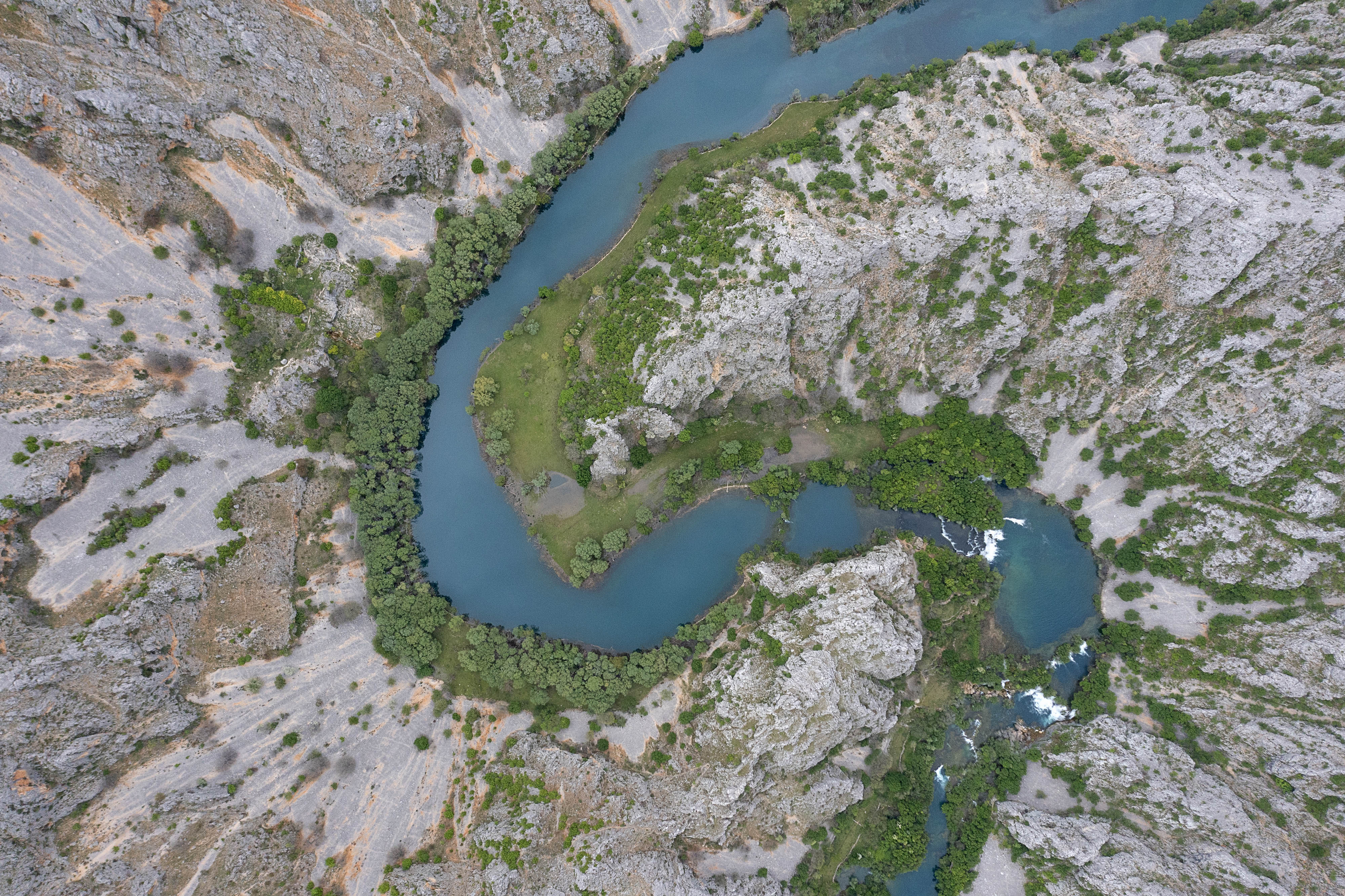
A Fresh Take on Water
In 1955, The Nature Conservancy pledged $7,500 toward the purchase of 60 acres of old-growth forest along the Mianus River Gorge in New York. It was the young organization’s first-ever land preservation project, and it was by any measure a triumph. But although the land was secured, the future of the Mianus River was being decided downstream. The preserve was established at approximately the same time that a dam was being built, converting the free-flowing Mianus River into a reservoir, and proving that protecting land around a river is not always enough to ensure a river system’s overall health. Threats come in many forms across the watershed, including dams, pollution and water extraction.
“I think that’s a lesson we’re still learning. In less than the span of TNC’s history, we’ve seen more than an 80% decline in populations of freshwater species—and even worse for large animals, like hippos,” says Tara Moberg, the Conservancy’s global freshwater strategy advisor. “This is the moment to turn the page, to move past the standing assumption that land preservation will inherently safeguard the freshwater systems within them.”
Instead, freshwater requires a combination of strategies like the Durable Freshwater Protection Framework, a roadmap for protecting rivers like those of the Balkan Peninsula, and water funds, where downstream human communities invest in the watersheds on which they depend for drinking water or irrigation.
Today, TNC is driving more than 450 current and planned freshwater projects, in 35 countries on five continents, spanning everything from fisheries management to dam removal. But it’s also working to overturn that “terrestrial bias,” both within the organization and across the global conservation community. Over the past few years, dozens of governments around the world have committed to protect or effectively conserve at least 30% of the world’s land and sea by 2030, commonly known as the “30 by 30” initiative. It’s vital, Moberg says, that freshwater systems are an explicit part of that equation. The 30 by 30 target is currently being negotiated by 196 countries under the Convention on Biological Diversity, a treaty that is expected to be renewed in 2022 after being signed 30 years ago at the Rio Summit on Environment & Development.
This fall, TNC joined experts and leaders from 97 countries and territories to urge the United Nations and national delegates to strengthen actions to protect and restore freshwater ecosystems under the Convention. And there are signs that the push to include freshwater in conservation targets is working—earlier this year, a federal report on U.S. efforts to meet the 30 by 30 goal mentioned freshwater resources alongside land and oceans, and the Campaign for Nature, the coalition leading the advocacy for 30 by 30, is partnering with TNC and others to call for freshwater to be prioritized in the 2030 commitments.
Protecting freshwater also requires understanding its unique vulnerabilities—agricultural runoff can cause harm far downstream of farms themselves, for example, while a single invasive species can throw a lake’s entire food web off balance. And while efforts to protect freshwater often succeed because they are connected to its value as a resource for humans, TNC is also working to highlight its importance as habitat for protecting biodiversity, including everything from humble invertebrates to lesser-known species like the West African manatee and Southeast Asia’s Irrawaddy dolphin. “There are amazing species in freshwater systems,” says Amy Newsock, TNC’s global freshwater protection program advisor. “But we don’t communicate about them as well as we do other species. There’s a paradigm shift that needs to happen, both in how we protect freshwater, and in how we talk about it.”
The Nature Conservancy’s work to protect freshwater systems around the globe is supported, in part, by Enterprise Rent-A-Car Foundation.
Two years after returning to the United States in 2010, Zablocki worked on trout conservation in Nevada before joining TNC to lead its programs in the Mojave Desert. Although he found himself back in the dry American Southwest, the turquoise waters of Southeast Europe were rarely far from his thoughts. He realized that the key to saving them might be found in his home country, where a model for preserving rivers in perpetuity had been in place for half a century. It was an ambitious scheme, but it might help to jump-start an international effort to save the Blue Heart of Europe.
Signed into law by President Lyndon Johnson in 1968, the Wild and Scenic Rivers Act grew out of an effort to save the Flathead River, in Montana’s Glacier National Park, from a proposed hydropower project. The law established a system for permanently protecting America’s most beautiful and ecologically important rivers that had been overlooked by previous conservation legislation. Today, it protects 13,000 miles of 226 designated rivers, in 41 states and Puerto Rico.
“It’s a relatively small amount of rivers and river miles, in comparison to all the rivers in the United States,” says Stephen Chesterton, Wild and Scenic Rivers national program manager with the U.S. Forest Service. “But one in 10 people in the country can trace their drinking water to a Wild and Scenic River watershed. It’s not just about the recreational benefits, which you might think of given the name of the program, but the ecological and day-to-day benefits of ensuring clean water.”
The Wild and Scenic Rivers Act represents a major success story in the United States, and Zablocki and his TNC colleagues hoped it could offer a model for Southeast Europe. To showcase the possibilities, they organized a trip for Balkan-area conservationists and government officials on the banks of one of America’s true jewels—a mountain-flanked stretch of the Snake River near Jackson, Wyoming. The September 2018 trip would connect the Europeans to their American counterparts, including representatives from TNC and partner organizations like American Rivers, the Interagency Wild & Scenic Rivers Council and the World Wildlife Fund, giving them a chance to learn about how the United States protects and manages its rivers.
Zablocki knew getting everyone together in Wyoming also offered a valuable opportunity to build relationships that would support conservation efforts across international borders. To facilitate bonding, they organized fly-fishing lessons, a river-themed movie night, and—letting the water work its magic—a rafting trip down the majestic Snake.
The European delegation set to work in their own countries as soon as they got home, supporting one another and continuing the conversation over Whats-App. Then, in December 2019, Croatia announced permanent protection, based on a “cultural heritage” designation, for the Krupa River—a short but stunning waterway that tumbles over multiple waterfalls as it passes through a karst canyon before connecting with the Zrmanja river on its way to the Adriatic Sea. The Krupa’s four miles and 19 cascades are popular with rafters and kayakers, and the meadows along its banks support traditional sheep and goat herders. Other draws include the legendary stone span known as Kudin Most that stretches across the river and the medieval Krupa Monastery that towers above it—historic sites now shielded against modern incursion.
Quote: Amy Newsock
Rivers are as diverse as the people who walk this planet, but there are common elements. We have unifying frameworks for land protection. We want there to be a common language for fresh water, too.
The Krupa River designation helped set a precedent for river protection that days later was followed by Montenegro, when it announced that the emerald-green Zeta River would be protected as a river nature park, to keep it permanently free-flowing and accessible for recreation.
“If we continue working together, Zeta will be the most attractive river for sports fishing in the Balkans,” says Vuk Iković, an ecologist with the Montenegran conservation group Organizacija KOD, whose hometown, Danilovgrad, stands to gain an economic boost from the Zeta designation.
Dragana Mileusnić, who along with Iković and others helped organize the local community, municipal government and nonprofit leaders to build support for the Zeta, calls it “quite a win.” Still, she says, “our work doesn’t end here. If we really want to see this river in ideal shape, fully restored, the next step is to develop a management plan that involves the local people.”
Even as TNC partners work with locals to protect more rivers across the Balkans, the Conservancy is working to scale up these early successes to save other vulnerable rivers around the world. In 2021, Higgins, Newsock, Zablocki and others at TNC published a set of guidelines for governments and conservation groups on how to engage local communities, build political will, identify legal and regulatory mechanisms for river protection, find funding and establish management plans.
“Rivers are as diverse as the people who walk this planet, but there are common elements,” says Newsock. “We already have unifying frameworks for land protection—World Heritage Sites, for example. We want there to be this common language for fresh water, too—something that everybody can apply to their unique context.”
The Conservancy is already talking with officials in Gabon about how the framework that succeeded in the Balkans could work for them, but Newsock also hopes that these efforts will nudge the global conservation community toward more consideration of fresh water. So far, advocates for terrestrial and marine ecosystems have had better luck winning allies. That may be due in part to humans’ natural affection for charismatic creatures like the giant panda and humpback whale. “You don’t really have that in our freshwater systems,” Newsock says. “I mean, how cute is a carp?” On the other hand, perhaps living intimately with freshwater ecosystems—historically, nearly every human settlement has grown up along a river’s banks—has simply allowed us to take them for granted.
But it’s also one big reason why fresh water is so important, and why those who are fighting for rivers, from the scientists and conservationists to the Albanian villagers protesting yet another hydroelectric plant, know that they can’t give up.
“You can fix a lot of other things,” Zablocki says, “but if you don’t get fresh water right, then nothing lives.”
John Zablocki left The Nature Conservancy in August 2021 after a seven-year tenure. He now works as an energy and environmental consultant.
For more information on The Nature Conservancy’s Durable Freshwater Protection work, contact Dragana Mileusnić, TNC Southeast Europe Program Director at dmileusnic@tnc.org.
